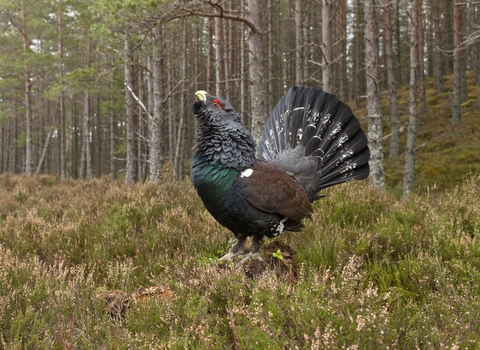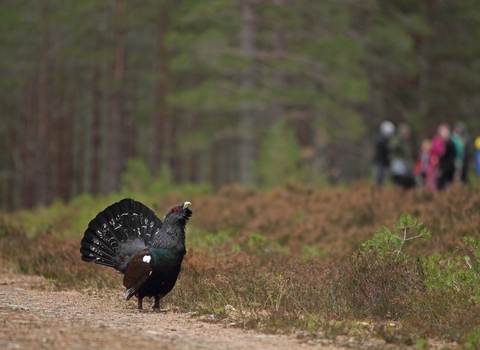
Capercaillie ©Mark Hamblin/2020VISION

Male capercaillie ©Luke Massey/2020VISION
Capercaillie
Male capercaillies perform spectacular communal displays in spring, gathering in woodland clearings to parade around, fanning their magnificent tail feathers and making strange gulping and clicking sounds as they compete for the attention of females.
Enw gwyddonol
Tetrao urogallusPryd i'w gweld
January to DecemberSpecies information
Ystadegau
Length: 74cmWingspan:106cm
Weight: 4.3kg (male), 2kg (female)
Classified in the UK as Red under the Birds of Conservation Concern 5: the Red List for Birds (2021). Protected in the UK under the Wildlife and Countryside Act, 1981.
